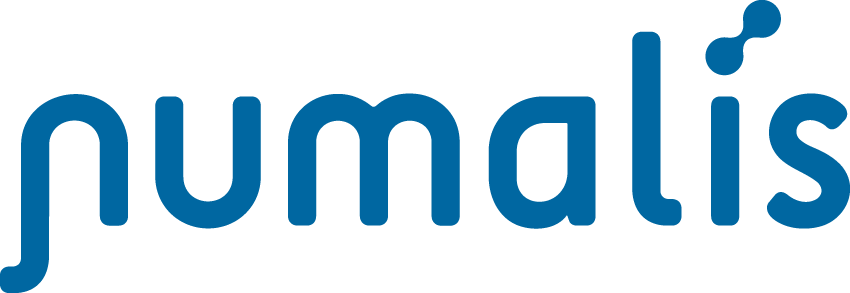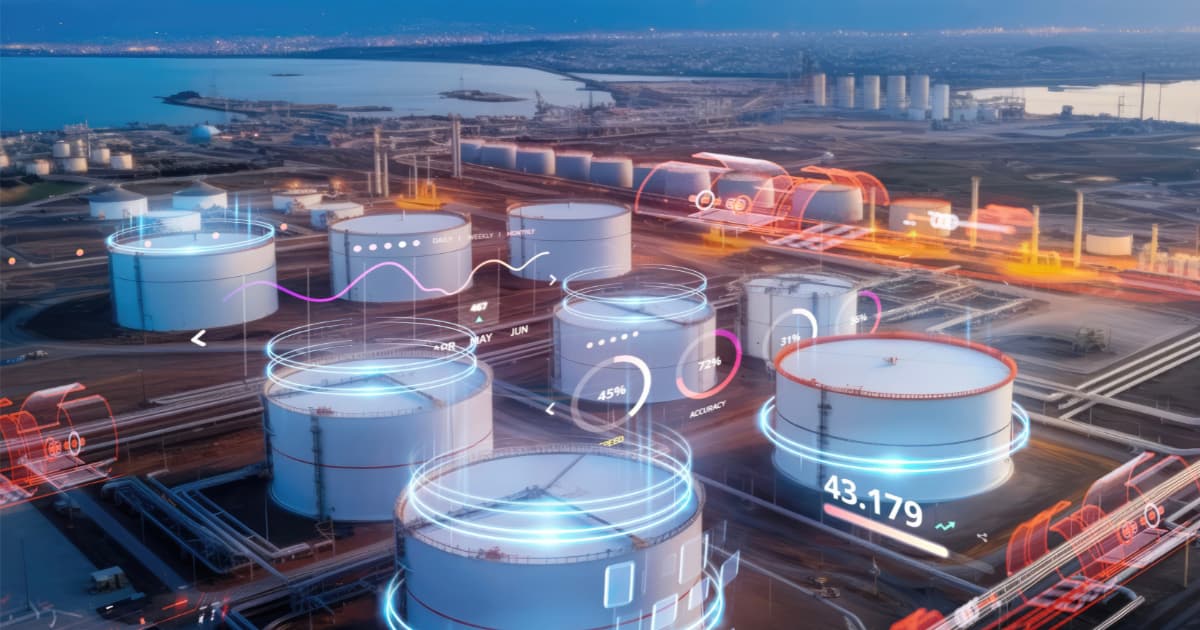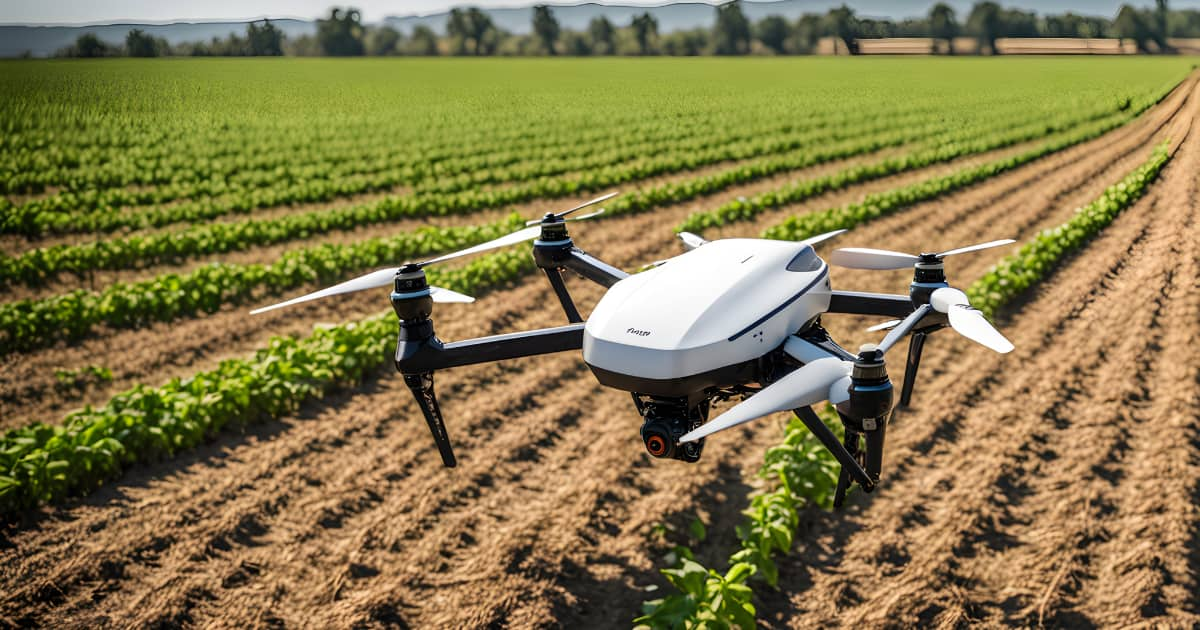Artificial intelligence (AI) is rapidly impacting different industries, and the oil and gas sector is no different. Despite the industry’s many challenges, AI has led to a paradigm shift, resulting in new opportunities like intelligent drilling, shaping future commercial development.
Daniel Jeavons, the VP of Computational Science and Digital Innovation at Shell, has admitted that AI to create solutions has helped increase operational efficiency, leading to cost reductions and improved reliability1.
A recent report confirmed this trend. The analysis2 indicates that the market size of AI in the oil and gas industry will grow from $2.67 billion to $4.63 billion between 2023-2028, a CAGR of 11.68% during this period3. The impact is profound and will be felt across entire operational segments(Upstream, Midstream, Downstream).
In this article, we explore AI in the oil and gas industry, its impact, the challenges, and its promise.
Use cases of AI in the oil and gas industry
There’s already a tangible influence of AI across the entire operation stream. This is because the industry harnesses vast amounts of data, which AI and machine learning techniques can sift through to provide unique insights. Here are the top five use cases of AI in the oil and gas industry.
Oil exploration
Oil and gas exploration is a complex, time-consuming, and capital-intensive process. It involves seismic surveying, well logging, and lab core analysis. All these studies, reviews, and tests culminate in 3D models, which are then analyzed for oil and gas deposits.
AI has emerged as an important asset, helping to accelerate and derisk multiple processes in oil exploration. Here’s a highlight of some of these processes:
Seismic data interpretation: This process is critical for identifying profitable fields and reserves. Traditionally, this stage depended on expert interpreters or seismic interpretation, which is resource-intensive. Deep learning models trained with seismic data can efficiently determine the presence of recoverable deposits4.
Reservoir mapping and well logging: Seismic images and well logging data are used in determining the reservoir topology and well characteristics. The time taken to process this data and the accuracy of results is greatly improved by the machine learning algorithms. Studies reveal that accuracy could be notched up to 92% and the process 1000 times faster than by manual mapping5. Additionally, AI initiatives geared towards subsurface and reservoir modeling can add a further 15%-30% production improvements. Total Energies has teamed up with Google, employing AI to optimize subsurface image interpretation from seismic data using computer vision6.
Production forecasting
Accurate determination of reservoir production is essential in helping the design and development of the fields. The main method used is reservoir numeric simulation, which consumes vast computational resources and time.
The ability of artificial intelligence and machine learning techniques to analyze vast amounts of data quickly is giving engineers an edge over previous methods. Companies are using different techniques, including fuzzy logic, artificial neural networks, and genetic algorithms, to leverage pattern recognition and parameter optimization for more accurate forecasting7. Platforms like Novi are already offering Upstream companies better ways to forecast production8.
Defects detection and oil spills
Oil and biofuel spillage amounted to 43,157 barrels and 578 pipeline incidents in the US in 20209. An AI-powered sensor network, autonomous robots, and computer vision systems can help monitor hardware and other critical infrastructure, even in remote areas. Such a system can detect wear and tear and alert operators.
With real-time updates from the field, companies like Shell are using predictive maintenance to monitor the health of equipment and critical infrastructure. The company is saving millions of dollars, already repairing nearly 90 valves by precisely identifying device failures10.
Aerial and field investigation methods of oil spill detection are ineffective, especially for marine environments, which prove costly and contribute to harmful ecological effects11. Currently, there are multiple studies showing the possibility of using different AI techniques to detect oil spills. Most use deep learning SAR imagery, especially in the Mediterranean Sea.
Autonomous drilling
There are many problems, such as bit wear, borehole instability, and stick sleep vibration, that hamper drilling. Machine learning algorithms can provide insight from well site data, especially in determining rock characteristics and drilling direction12. Engineers can see the drilled rock type and failure detection using real-time drilling telemetry13.
ExxonMobil is currently using an AI-controlled drill system for its Guyana operations that’s capable of autonomously determining the drilling parameters. The system enhances operation safety and efficiency by reducing repetitive tasks by rig operators14.
Predictive maintenance
Oil and gas companies practice regular scheduled asset maintenance. However, using sensors and AI helps track the operational state of equipment and identifies anomalies while recommending precise maintenance. Using machine learning algorithms and data analytics, it’s possible to have solutions that identify issues with flow rate, pressure, and equipment thermography to avert costly breakdowns.
Companies like Chevron, BP, and ExxonMobil have deployed AI for predictive maintenance. Here are some examples:
- ExxonMobil is using predictive maintenance solutions in its Permian Basin15.
- Chevron has deployed a platform in conjunction with Microsoft that has helped the company prevent 12 major accidents and save the company $12 million in the first year of deployment16.
- Shell runs a predictive maintenance program powered by AI that monitors over 13,000 pieces, deriving insights from a data lake consisting of 3 trillion rows17.
What are the Benefits and challenges of AI in the oil and gas industry?
AI has the potential to unlock insights across the entire value chain for oil and gas companies. It’s helping the sector realize incredible benefits, inspiring new efficiencies in exploration, production, and distribution. However, since the technology is still in its nascent stages of development and adoption, a lot still needs to be done, and challenges exist.
Benefits
Increased efficiency
There are many areas where AI continues to improve efficiency in the oil and gas industry, such as equipment maintenance and reservoir modeling. For instance, AI-powered systems using machine learning and deep learning can help in upstream operators find optimal wells. Studies indicate that AI can help improve the recovery of hydrocarbons by 10%, corresponding to accessing about $1 trillion worth of oil18.
Reduced costs
The use of AI is seeing firms realize cost reduction in various ways. Operational efficiency is achieved by using AI systems, helping to reduce costs while improving production. For instance, predictive maintenance precisely and reliably identifies assets likely to fail, saving costs on scheduled maintenance and costly aftermaths. Unplanned equipment failures can cost $2-3$ million per day in offshore oil and gas platforms19.
Shell can harness an additional 1-2% of LNG production by using AI to optimize asset performance.
Streamlining operations
AI brings immense benefits in the back office, helping in decision-making, handling repetitive tasks, supply chain management, and monitoring.
For instance, it’s possible to leverage machine learning to sift through large datasets to identify patterns and make recommendations to help operators with various tasks. Analysis of transport routes could result in route optimization, while data on weather patterns and drilling could lead to safer working conditions.
Improved safety
Oil and gas firms continue to seek ways to improve their worker and plant safety. AI solutions provide a way to monitor the safety of workers and equipment in sites characterized by heavy equipment, high pressure, and high temperature.
It’s possible to use deep learning and computer vision algorithms in systems that detect safety violations. For instance, pattern recognition solutions can analyze video streams from sites, helping flag personnel who are not adequately protected. Additionally, operators can be alerted of the safety status of assets, enabling proactive deterrent measures to avert safety incidents20.
Upstream operations face challenges with toxic environments with probable release of flammable and toxic gases, which can be extremely hazardous. AI systems can help monitor toxicity levels and provide timely alerts to avoid catastrophic events21.
Challenges
Quality and quantity of data
Most of the data for oil and gas companies comes from their sensors, drilling operations, and equipment. This data may exist in silos, in different formats, and of varying quality which makes it difficult to integrate.
In a survey by IBM, only 38% of executives in the oil and gas firms indicated they have enterprisewide information standards. It’s a challenge to derive any meaningful insights from data that’s not properly managed. Without quality data, results from AI models may be misleading or ineffective. Probable solutions include adapting better workflows and centralizing data storage22.
Ethical issues and Skill level
AI systems utilize large datasets, which may include personal or geological data, which may require different ways to process depending on the jurisdiction. Additionally, AI systems must be properly evaluated to avoid bias and boost transparency.
Additionally, there’s a need for personnel to upskill as the oil and gas industry continues to rely on AI. For instance, using autonomous equipment, AI-driven robots, and solutions will require workers to upskill. For example, ExxonMobil admitted that there were challenges in adopting its new system when rolling out AI on its offshore platform in Guyana.
Current trends and Future outlook of AI in the oil and gas industry?
Companies that have embraced AI solutions have witnessed increased revenue, reduced expenses, and become cost-effective compared to their cohorts. This is true, especially for intelligent wellbore drilling optimization, which many upstream companies have adopted.
More companies are looking to continue to integrate AI into their operations going into the future. Forecasts show that North American companies are likely to account for the largest market for AI in the oil and gas sector due to established AI software companies and IT systems suppliers23.
Here are some of the other promising AI-assisted technologies that will apply in the oil and gas sector:
- AI-assisted cheminformatics
- Intelligent embedded systems
- AI-driven workflow management
- AI-assisted CAD
- AI-assisted radiology
Conclusion
The oil and gas industry has seen a significant impact from the use of AI. Although the industry is famed for complexities, multiple companies have found ways to integrate the technology into their operations. From AI-assisted drilling to back-office operations, oil and gas companies have reaped multiple benefits ranging from reduced costs to improved efficiency.
Companies like Shell and ExxonMobile have put AI into different use cases, including upstream exploration, production forecasting, and predictive maintenance. However, some challenges hinder the use of AI, including ethical issues and data management issues.
Current trends and future outlooks indicate that AI will play a significant role in the industry as companies continue to ink partnerships, develop better data practices, and innovate.
- C3 AI and Shell Expand Collaboration for Asset Monitoring and Predictive Maintenance ↩︎
- AI in Oil and Gas Market Analysis ↩︎
- AI in Oil and Gas Market – Artificial Intelligence – Trends & Companies ↩︎
- Artificial Intelligence Transforms Seismic Interpretation | Egypt Oil & Gas ↩︎
- Energizing the oil and gas value chain with AI ↩︎
- Total to Develop Artificial Intelligence Solutions with Google Cloud | TotalEnergies.com ↩︎
- Optimizing Gas Production Forecasting in Iraq Using a Hybrid Artificial Intelligence Model | IEEE Conference Publication ↩︎
- Probabilistic Oil and Gas Production Forecasting | Machine Learning ↩︎
- U.S. oil pipeline spill volume 2020 | Statista ↩︎
- The Digital Transformation of Shell ↩︎
- Oil Spill Detection & Monitoring with Artificial Intelligence: A Futuristic Approach ↩︎
- Application of machine learning and artificial intelligence in oil and gas industry – ScienceDirect ↩︎
- Artificial intelligence in oil and gas upstream: Trends, challenges, and scenarios for the future – ScienceDirect ↩︎
- Digital technologies | ExxonMobil ↩︎
- Nine oil and gas companies leading the use of predictive maintenance ↩︎
- Cost-Benefits of AI in the HSE domain of the Oil and Gas Industry ↩︎
- Mission possible: helping transform energy with digital tech | Shell Global ↩︎
- Energizing the oil and gas value chain with AI ↩︎
- Application of machine learning and artificial intelligence in oil and gas industry – ScienceDirect ↩︎
- Artificial intelligence in oil and gas upstream: Trends, challenges, and scenarios for the future – ScienceDirect ↩︎
- AI in Oil and Gas Market – Artificial Intelligence – Trends & Companies ↩︎
- Artificial intelligence in oil and gas upstream: Trends, challenges, and scenarios for the future – ScienceDirect ↩︎
- Energizing the oil and gas value chain with AI ↩︎







